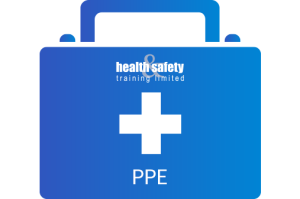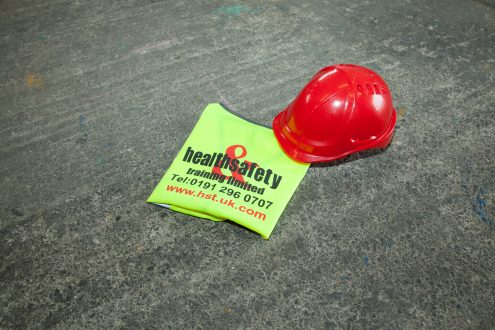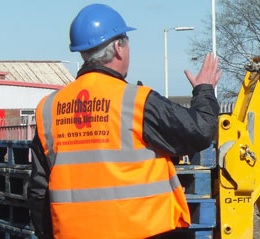The Health and Safety Kit: PPE
 One of the most effective steps you can take to ensure you are upholding sufficient health and safety in your workplace is to provide PPE (Personal Protective Equipment) to your workers.
One of the most effective steps you can take to ensure you are upholding sufficient health and safety in your workplace is to provide PPE (Personal Protective Equipment) to your workers.
Even in situations where you have established a safe system of work, there may still be hazards that present a risk to workers which can be protected against with the right type of PPE.
The Hazards
- Contaminated air (fumes and dust)
Respiratory problems and lung disease can result from even short term exposure to breathing contaminated air. Providing simple face masks that filter out dust may be sufficient protection in some cases, or you may need to rely on power-assisted respirators to protect from fumes and vapours.
In extremely hazardous environments, breathing apparatus with an independent supply of air, such as fresh-air hoses or self-contained breathing apparatus may be necessary to provide complete protection from harm.
- Falling materials and equipment
An impact from falling or flying objects, or even low beams that can be bumped into present a risk to the safety of workers. Industrial safety helmets, hard hats or bump caps are necessary in these situations. As are safety boots or steel toe capped shoes that will protect workers feet from dropped objects.
Many helmets will also incorporate ear and eye protection for high risk environments.
- Corrosive liquids, particles and dust
The risks to eyes can range from gas, vapour and radiation to particles, chemical splashes and dust, and as eyes are one of the most sensitive parts of the body, where even minor damage can result in long term limited sight or even blindness, protection is essential.
Safety goggles or spectacles, face screens, face shields and helmets with visors (such as welding masks) will all provide protection from different hazards so you’ll have to choose the right type of protection for the applicable hazards – splashes, dust, impacts, etc.
- Corrosive materials, skin irritants and penetration
Chemicals, contaminated dust, sharp objects, sparks or particles, gas and vapours can all cause damage is they come into contact with exposed skin.
In some cases gloves, gauntlets or sleeving can provide adequate protection, but in other industries full body protection must be supplied, such as aprons, overalls, boiler suits or chemical suits.
- Extreme temperatures
If workers are exposed to extreme temperatures, hot or cold, they may require protective clothing that incorporates thermal insulation or heat or fire resistant properties.
For example, thermal jackets, gloves and boots may be necessary for workers in freezing conditions such as cold stores.
- Loud noises
High sound levels, even for short periods, or long periods of exposure to sound can result in hearing loss and damage, but the right type of earplugs and earmuffs will provide protection against lasting damage.
The Law
The Health and Safety at Work Act 1974 covers all work environments and places a duty of care on employers to ensure the safety of their workers by taking reasonable steps to remove or reduce any hazards. Risk assessments are a legal requirement for most working environments and will help you to identify the risks presents in order to protect against them.
The other applicable pieces of legislation are the The Personal Protective Equipment Regulations 2002 and the Personal Protective Equipment at Work Regulations 1992 (as amended), as well as other special regulations that cover specific hazards such as hazardous substances, noise and radiation.
Your Responsibilities
As an employer, you should only use PPE as a last resort, so when other safe systems of work fail to provide adequate protection or when the risk is unable to be completely removed. In these cases, PPE must be provided free of charge to employees and it is your responsibility, as the employer, to ensure it is appropriate for the level of risk, fits each individual properly and that they are trained to use it and detect any faults. It must also be adequately and regularly maintained.
To select the correct type of PPE you must ask yourself who is at risk; what are they at risk from; how long is exposure to the risk; and what is the level of risk.
All PPE must be CE marked. It must fit the user and if it must be used alongside other forms of PPE, it must be compatible.
You should also provide appropriate instruction and training so your workers know how to use it safely, when it is necessary or compulsory and how to recognise faults that may make it less effective.
You must also monitor and review the use of PPE to ensure it is always being used properly, install safety signs in areas where PPE is compulsory and take into consideration any changes to materials, processes or equipment that may mean you need to upgrade your PPE.
Available Training
As an employer, manager or business owner you are directly responsible for the safety of your workers and the provision of PPE. By ensuring you and your supervisors have the correct training to properly manage the use of PPE and that your workers are trained to work safely and use PPE when necessary, you can protect your workers from risk and protect yourself from legal repercussions
At Health and Safety Training Ltd, we offer a range of health and safety courses that can help you maintain a safe working environment, including:
For any more information, or to arrange training for you, your managers or your workers, simply get in touch today. We’ll be happy to tailor any courses to ensure they suit the particular risks of your industry or workplace.
UKCG Recognises NPORS Cards at Last! The Consequences of Working Without a Forklift Certification






